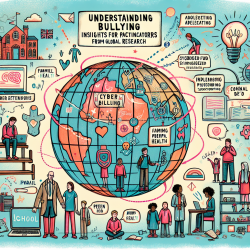Spotting the Signs: Child Welfare in a Virtual World
The COVID-19 pandemic has reshaped many aspects of our lives, including the way we educate and protect our children. With schools transitioning to distance learning, the role of educators in identifying and reporting child abuse and neglect has become more challenging yet crucial. A recent study, Spotlight on child abuse and neglect response in the time of COVID-19, highlights the importance of adapting child welfare protocols to the current educational landscape.
The Role of Educators
In the United States, educational personnel account for 20% of reports to child protective services. However, during the initial stages of the pandemic, reports of child maltreatment significantly decreased, not due to a reduction in incidents, but because of reduced contact between children and educators. This underscores the vital role schools play in child welfare.
Adapting Protocols for Distance Learning
To continue safeguarding children in a virtual setting, schools must adapt existing protocols. Here are three key strategies:
- Identify At-Risk Individuals: Educators should be trained to recognize signs of abuse and neglect that may manifest differently in a virtual environment. This includes changes in behavior, unexplained absences, or signs of distress during online interactions.
- Safe Communication: Teachers need to use specific language and protocols to inquire about a child's home environment safely. This involves asking open-ended questions and creating a safe space for children to express concerns.
- Reporting Mechanisms: Establish clear channels for reporting suspected abuse to school personnel, such as headteachers or guidance counselors, ensuring that children receive appropriate support and resources.
Long-term Implications
Even if the increase in child maltreatment is temporary, the effects are long-lasting. Abuse and neglect can lead to mental health disorders, substance abuse, and other health issues. Therefore, it is crucial to address these issues promptly and effectively.
Moving Forward
As schools gradually return to in-person learning, it is essential to integrate lessons learned from distance learning into future protocols. This involves continuous training for educators and the development of robust systems to identify and intervene in cases of child abuse and neglect, whether in-person or online.
Practitioners and educators are encouraged to delve deeper into this topic by exploring further research and adapting their practices to ensure the safety and well-being of children in any learning environment.
To read the original research paper, please follow this link: Spotlight on child abuse and neglect response in the time of COVID-19.










